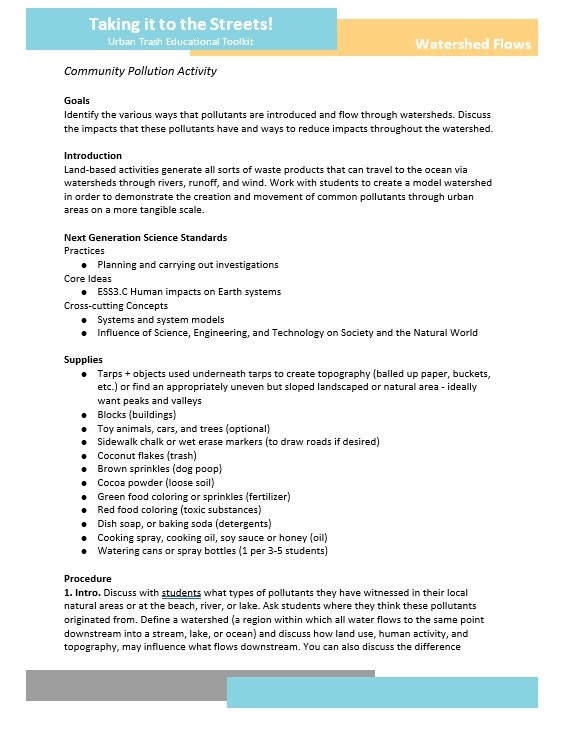
Build a city, trash it up and visualize how trash and contaminants move through a watershed after precipitation events. Students will Identify the various ways that pollutants are introduced and flow through watersheds. Discuss the impacts that these pollutants have and ways to reduce impacts throughout the watershed.
"Taking it to the Streets" was developed by California Sea Grant, in partnership with the Ocean Discovery Institute and the NOAA Marine Debris Program. It includes a standardized street trash monitoring protocol and hands-on Trash Troop science education activities. The monitoring protocols are intended for community scientists of all ages and backgrounds, and the educational activities are aimed at students grades 8 through 12 for use in classrooms, clubs, scouts, camps, after-school programs and more.
These educational activities and lessons align to Next Generation Science Standards and engage students in hands-on learning to understand, assess, and address plastic pollution in their community. By focusing on urban areas and contexts in lesson materials, the Trash Troop science education activities provide the resources and opportunity for place-based learning in areas that are often overlooked in marine debris lessons.
 An official website of the United States government.
An official website of the United States government. 